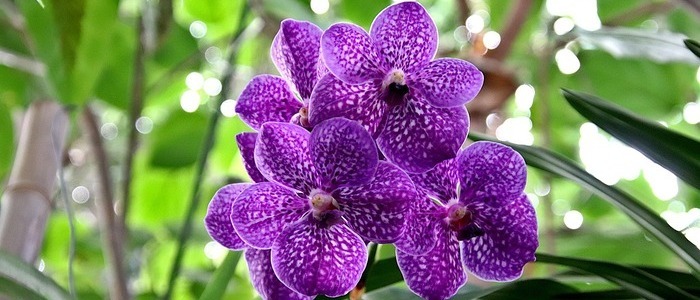When selecting an Echeveria Purple Pearl, it is important to make sure you have a healthy plant that will thrive in your home. Start by carefully inspecting the roots for any signs of rot or damage. If the roots appear mushy or smell bad, discard the plant and look for another one. Next, look at the leaves and stem for any discoloration or pests.
The leaves should be vibrant with no signs of damage or wilting. Make sure to check the potting soil, too – it should be moist, but not wet. Too much water can cause root rot, so make sure there are drainage holes in the pot to prevent this from happening. You should also inspect the stem and leaves for any pests that may have invaded your potential purchase.
If these are present, it’s best to choose a different plant as they could spread quickly and damage your Echeveria Purple Pearl. Once these steps are followed when selecting an Echeveria Purple Pearl, you can be sure to get a healthy plant that will thrive in your home!

Echeveria Purple Pearl Frequently Asked Questions
How do you propagate Echeveria Purple Pearl?
To propagate Echeveria Purple Pearl, you can start by removing a healthy leaf from the main plant. Allow the cut end of the leaf to callus over for a few days, then plant it in well-draining soil. Keep the soil slightly moist and place the cutting in a location with indirect sunlight. With time and proper care, the leaf will develop roots and eventually grow into a new Echeveria Purple Pearl plant.
Is Echeveria Purple Pearl a flowering plant?
Yes, Echeveria Purple Pearl is indeed a flowering plant. It is known for its stunning purple-pink flowers that bloom in the summer months. These vibrant flowers add a pop of color to the succulent's already beautiful rosette-shaped leaves, making it a popular choice among gardeners and succulent enthusiasts.
How to Choose Suitable Growing Conditions for Echeveria Purple Pearl
Echeveria Purple Pearl plants are an ideal choice for those looking for a hardy, low-maintenance succulent. With the right care, these plants can thrive and bring a bit of color to your home.
The key to success when it comes to growing Echeveria Purple Pearl is providing it with the right conditions. These succulents prefer warm climates and need to be planted in a fast-draining potting mix. To prevent root rot, make sure that the potting soil does not become saturated with water. While they can tolerate direct sunlight, they will also do well in partial shade. So, you can even place them indoors as long as there is enough natural light available.
When it comes to watering, Echeveria Purple Pearl requires very little—only water when the soil is dry. It’s important not to overwater them, as this can cause root rot and other health issues for your plant. During warmer months, you can improve your plant’s health by misting the leaves with water every few days. This will help keep them hydrated and help prevent common pests like scale and mealybugs from invading your plant.
Finally, if you want your Echeveria Purple Pearl to really thrive, you should re-pot it every two years or so into fresh potting soil. This will give your plant access to new nutrients which are essential for its growth and development. When re-potting, make sure that you use a well-drained soil mixture. You should also position the plant in an area where it will receive ample sunlight or partial shade throughout the day.
Watering and Fertilizing the Echeveria Purple Pearl
Watering and feeding are essential for Echeveria Purple Pearl succulents to stay healthy and thrive. Properly watering and feeding your plant is key to keeping it looking its best.
When it comes to watering, it’s important to keep the soil moist but not soggy as too much water can cause root rot. Allow the soil to dry out between waterings and then water deeply, making sure the entire root system is saturated. During the summer months, these plants may need to be watered more frequently than in winter when they enter a dormant period.
In terms of feeding, fertilize your Echeveria Purple Pearl every two weeks during the growing season with a diluted, balanced fertilizer. In fall and winter months, reduce this frequency to once a month. Avoid getting fertilizer on the leaves, as this can burn them. Instead, focus on applying fertilizer at the base of the plant, where it will be absorbed by the roots directly.
Following these guidelines will ensure that your Echeveria Purple Pearl receives adequate moisture and nutrition throughout its growth cycle. With regular care and attention, you should have no problem keeping your Echeveria Purple Pearl looking beautiful for years to come!
Re-potting and Propagation Tips for Echeveria Purple Pearl
Re-potting and propagating Echeveria Purple Pearl succulents can be a rewarding experience. When selecting the right pot for your plants, make sure it has drainage holes at the bottom. When choosing your soil mix, a light and airy soil blend that is specifically designed for cacti or succulents will work best.
To re-pot your Echeveria Purple Pearl, wait until the roots have filled up the pot in early spring. Carefully remove the plant from its old container and place it into its new home. Make sure to fill in any gaps around the root ball with additional soil mix. However, do not press down on it too much as this may cause damage to the roots. Water lightly after re-potting and place in an area with bright indirect sunlight.
Propagating Echeveria Purple Pearl is relatively easy to do and can be a great way to grow new plants for free! Start by taking cuttings of healthy stems using sharp scissors or pruners. Then remove any lower leaves from the cutting so there are no leaves below where you’ll be planting them in moist soil. Keep cuttings dry for two weeks for their ends to form calluses before planting them in their new pots or beds. After about six weeks, you should see signs of life sprouting up!
Overall, when properly cared for, Echeveria Purple Pearl can thrive indoors or outdoors. With the care tips outlined above, you should have no trouble keeping your succulent happy and healthy all year round!
Common Pests That Can Harm Echeveria Purple Pearl
When growing Echeveria Purple Pearl succulents, it is important to be aware of common pests that may attack the plant. These include aphids, mealybugs, scale insects, spider mites, and whiteflies. All of these pests can cause discoloration and damage to the succulent leaves.
The best way to spot any signs of an infestation is to look for tiny bumps on the leaves or a sticky residue around the stems. If you suspect your plant has been attacked by pests, there are a few steps you can take to remove them.
One option is to use a commercial pesticide that specifically targets the pest species identified in your garden or home. However, this type of treatment should only be used when necessary as it can also harm beneficial insects and other plants nearby.
Organic methods are another great option for dealing with pests on Echeveria Purple Pearl plants, such as using neem oil or insecticidal soap sprays. If neither of these methods works for you, manual removal is also an option. Simply pluck off any visible bugs with tweezers or rinse them off with water from a hose or spray bottle.
By following these steps, readers can ensure their Echeveria Purple Pearl succulents stay healthy and thrive all year-round.
Conclusion
Thanks for joining us as we discuss how to select, grow, and care for Echeveria Purple Pearl succulents. With the information provided in this blog post, readers can create a healthy environment for their plants and ensure they remain vibrant all year-round.
Echeveria Purple Pearl are stunningly beautiful plants that require special care and attention to stay healthy. It’s important to keep the soil moist but not soggy.
Fertilize regularly during growing season, re-pot, and propagate when necessary, and protect from common pests.
If you need help selecting or caring for your Echeveria Purple Pearl succulents, there are many services available online. Additionally, there are products specifically designed to help you keep your plant healthy. These include potting soils with high levels of drainage or pest control products like neem oil or insecticidal soap sprays.
We hope this blog post has answered any questions you may have about selecting, growing, and caring for Echeveria Purple Pearl succulents. Thank you for taking the time to read our article – we wish you luck in creating a beautiful space with these stunning plants!.













